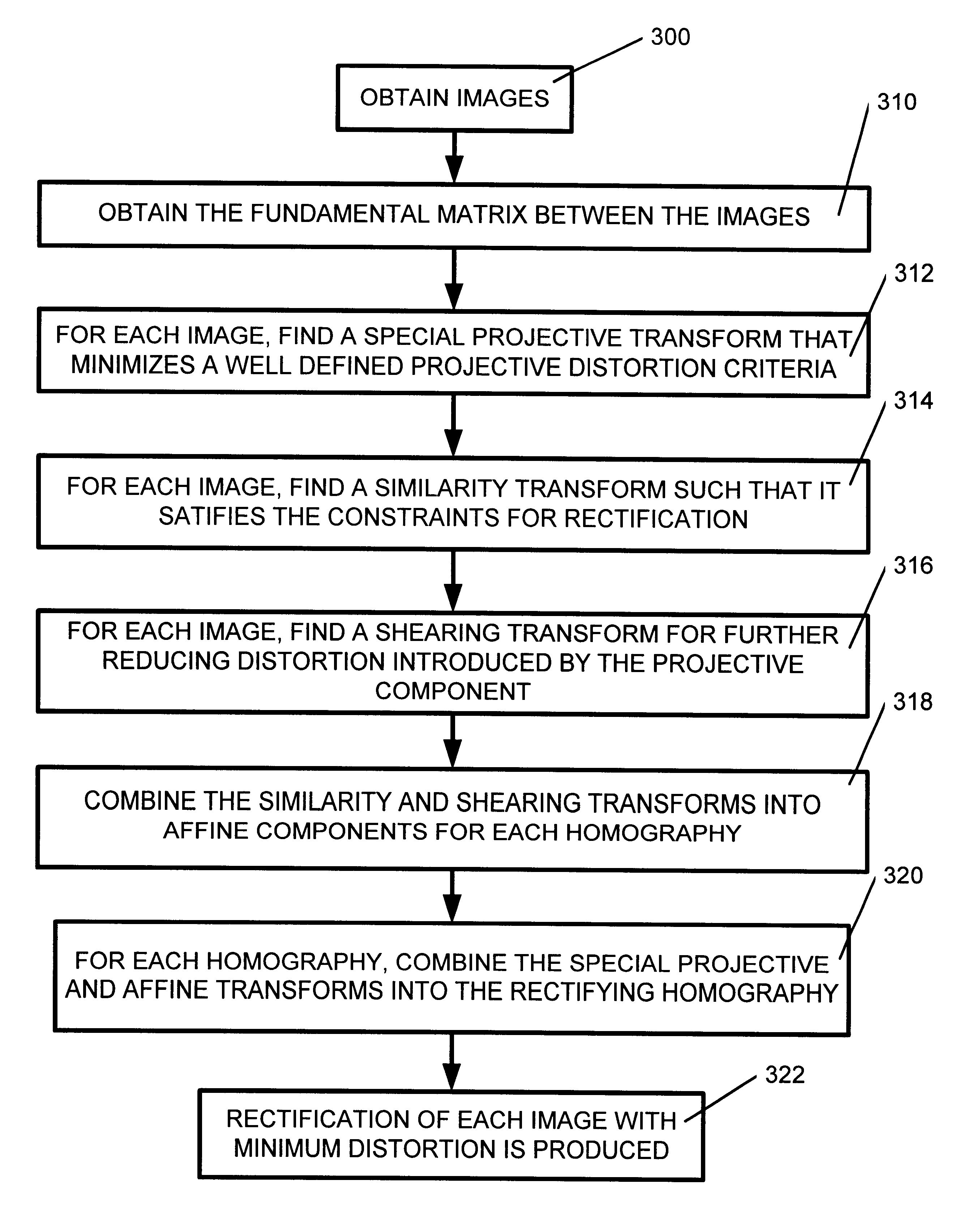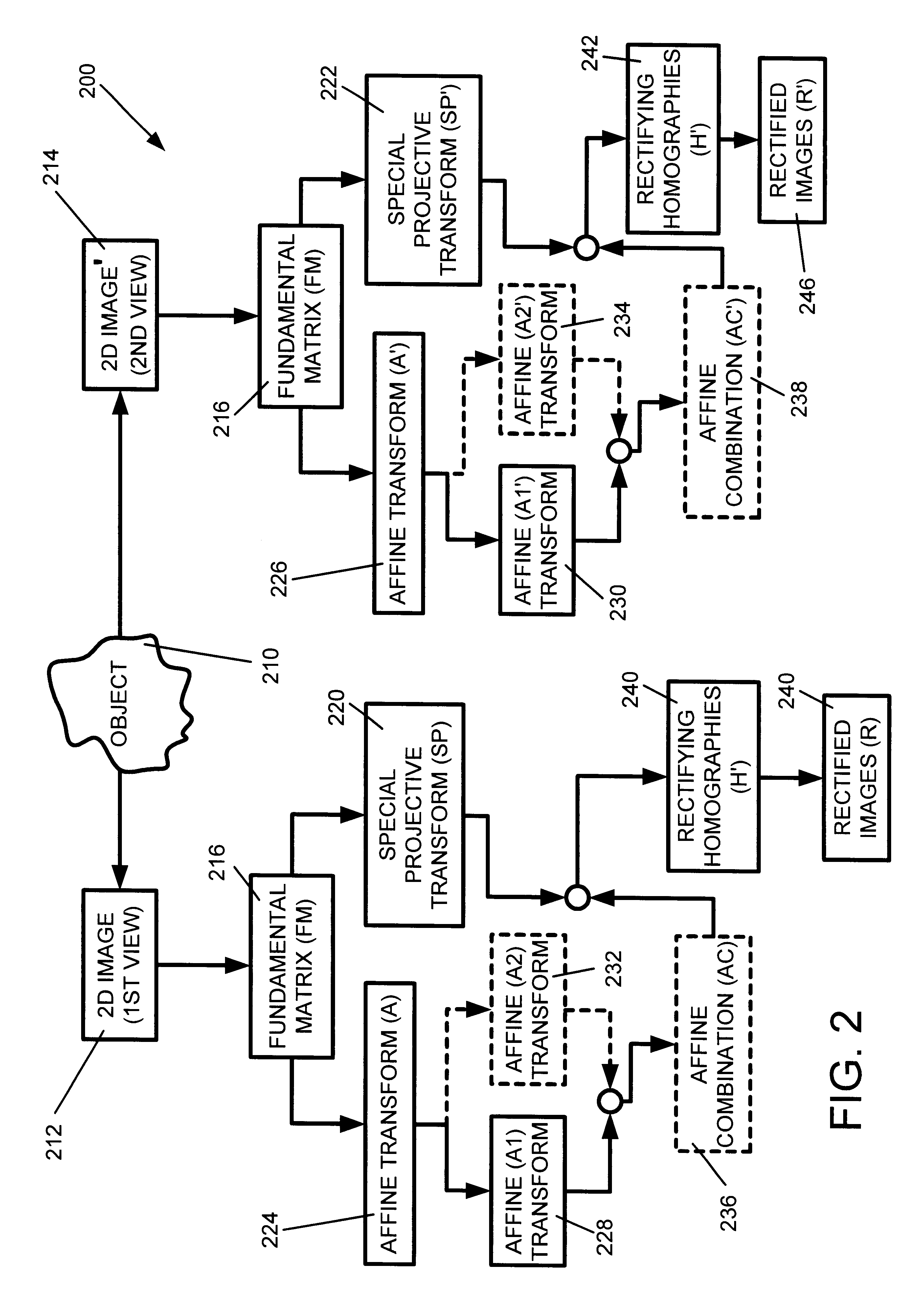System and method for computing rectifying homographies for stereo vision processing of three dimensional objects
a three-dimensional object and stereo vision technology, applied in the field of object modeling, can solve the problems of time-consuming searches, difficult realization in practice, and insufficient optimal reduction of the distortion effect of image rectification
- Summary
- Abstract
- Description
- Claims
- Application Information
AI Technical Summary
Problems solved by technology
Method used
Image
Examples
Embodiment Construction
The present invention is embodied in a procedure for computing rectification homographies for a pair of images taken from distinct viewpoints of a 3D scene, as discussed in detail above. FIGS. 8-11 are pictures illustrating one working example of the present invention and show the results of each stage of the working example. The present invention is based on quantifiable 2D image measures and does not require 3D constructions. Further, these measures have intuitive geometric meanings. Namely, as discussed above distortion due to the projective component of rectification is minimized, and additional degrees of freedom are used in the affine component to further reduce distortion to a well defined minimum.
Referring back to FIG. 2 along with FIGS. 8-11, in this working example FIG. 8 shows an original image pair overlaid with several epipolar lines. FIG. 9 shows the image pair transformed by the specialized projective mapping H.sub.p and H'.sub.p 220 and 222. Note that the epipolar li...
PUM
 Login to View More
Login to View More Abstract
Description
Claims
Application Information
 Login to View More
Login to View More - R&D
- Intellectual Property
- Life Sciences
- Materials
- Tech Scout
- Unparalleled Data Quality
- Higher Quality Content
- 60% Fewer Hallucinations
Browse by: Latest US Patents, China's latest patents, Technical Efficacy Thesaurus, Application Domain, Technology Topic, Popular Technical Reports.
© 2025 PatSnap. All rights reserved.Legal|Privacy policy|Modern Slavery Act Transparency Statement|Sitemap|About US| Contact US: help@patsnap.com



